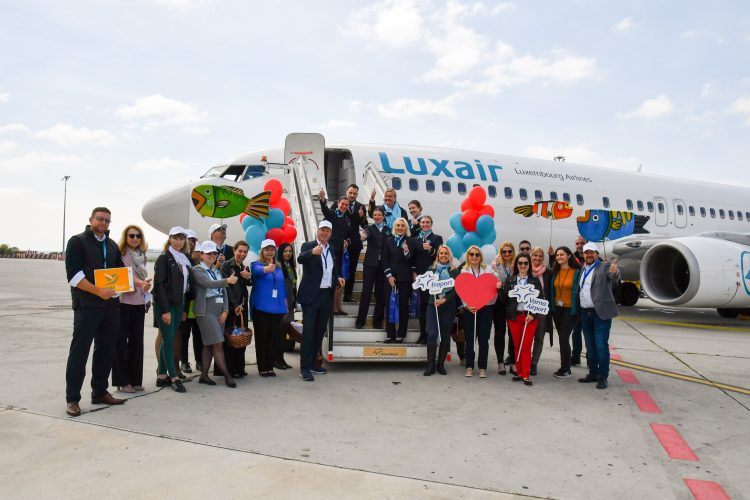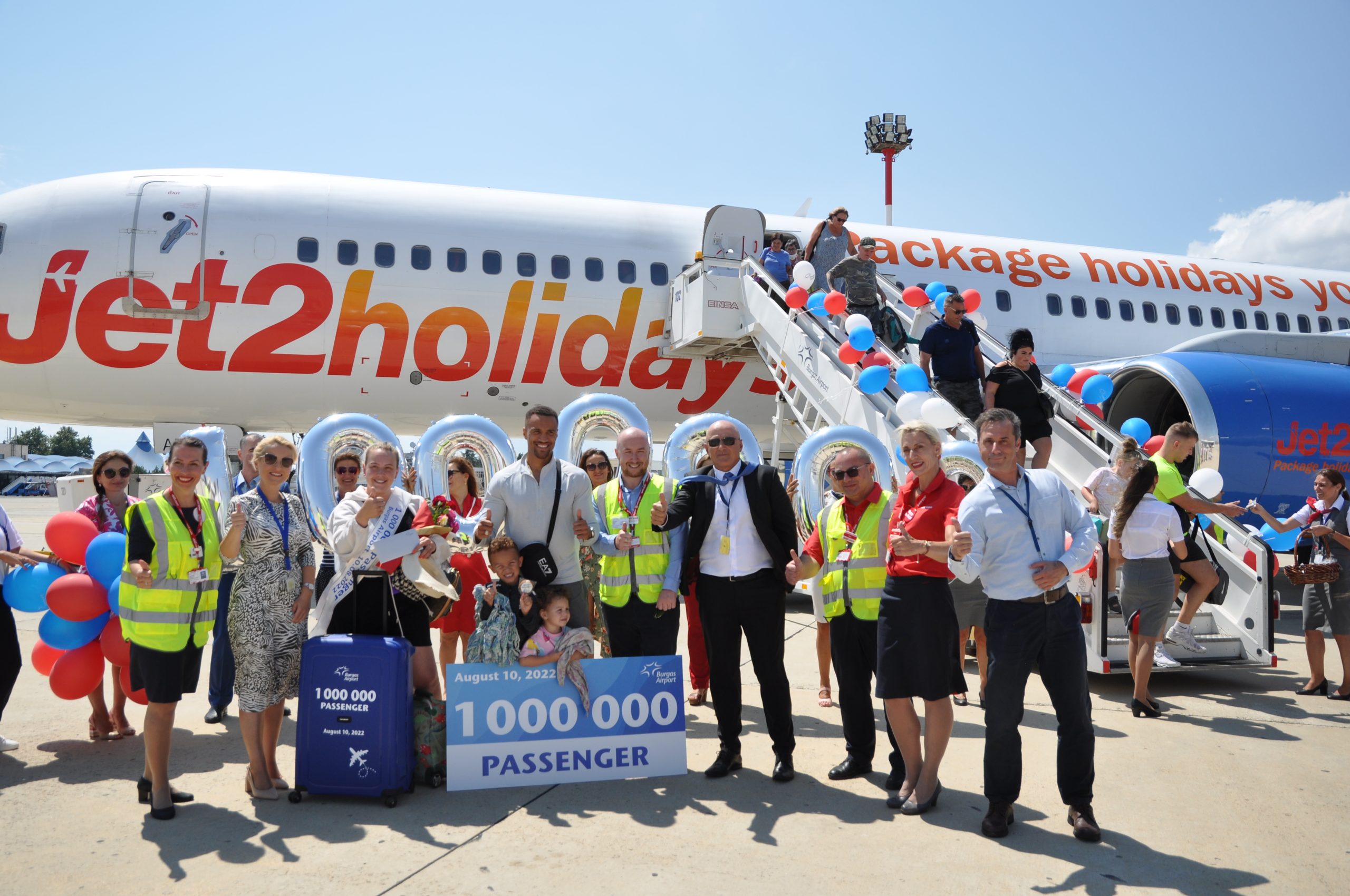Fraport Bulgaria: New routes, challenges, and opportunities
- Like
- Digg
- Del
- Tumblr
- VKontakte
- Buffer
- Love This
- Odnoklassniki
- Meneame
- Blogger
- Amazon
- Yahoo Mail
- Gmail
- AOL
- Newsvine
- HackerNews
- Evernote
- MySpace
- Mail.ru
- Viadeo
- Line
- Comments
- Yummly
- SMS
- Viber
- Telegram
- Subscribe
- Skype
- Facebook Messenger
- Kakao
- LiveJournal
- Yammer
- Edgar
- Fintel
- Mix
- Instapaper
- Copy Link
Posted: 14 July 2023 | Denitsa Milosavljevic | No comments yet
Editorial Assistant, Chunekshi, caught up with Fraport Bulgaria’s Head of Aviation Marketing, Denitsa Milosavljevic, at Routes Europe 2023. During the discussion, Denista explained how Fraport Bulgaria’s business is doing and the route development opportunities they have for the future.


New routes and opportunities for Fraport Bulgaria. CREDIT: FRAPORT BULGARIA
Would you mind telling our audience a bit about who you are, and what your role means for Fraport Airport?
My name is Denitsa Milosavljevic, I am heading the Aviation Marketing team of Fraport Bulgaria and I look after both Burgas and Varna Airports at the Bulgarian Black Sea coast.
How has business been for Fraport Bulgaria?
As Fraport Bulgaria looks after both Burgas and Varna Airports, I share the development of both. If I had to summarise the last year, 2022, it was both challenging and successful for us. Challenging, because just as when we started to recover from COVID-19, the war in Ukraine began which, for our traffic, meant a loss of passengers from Russia, Ukraine and Belarus, (down 16% compared to 2019 figures). The war also negatively influenced the confidence of travellers from Western Europe, in whose perception Bulgaria was too close to the conflict.
Eventually, people realised that Bulgaria is not affected by any means and is safe, which has seen travel confidence gradually return. We finished 2022 with 3.1 million PAX for both airports altogether, which is 63% of our 2019 traffic – below the recovery of other touristic destinations, but still good considering our own specifics and challenges.


Flying new routes with Fraport Bulgaria. CREDIT: FRAPORT BULGAIRA
Since the start of 2023, overall passenger traffic figures exceed 2019, especially at Varna Airport. For the period January – April 2023 at Varna and Burgas Airports, we are jointly at +73% vs the same period last year. Moreover, Fraport Bulgaria are also exceeding 2019 numbers, by 47%. This successful start of the year is a result of the increased number of year-round destinations and frequencies at Varna Airport, improved load factors of almost all airlines, and an early start of the summer season at Burgas Airport – which began at the end of March.
What seasons are the most active and what are their challenges?
We look to develop the traffic during off-peak season (that is, outside peak summer months from June – September). Seasonality and the relatively short summer are the biggest challenges for our airports. During 2023 and 2022, Fraport Bulgaria’s off-peak traffic not only recovered faster, but it grew year-on-year, exceeding 2019 by double digit figures.
Fraport Bulgaria has been recognised for a rise in passenger volume. Congratulations! What work went behind this to make this happen?
It is the joint efforts of good collaboration between us, as airport operators, and our airline partners. We identify opportunities and propose cases to our airline partners, who have been very agile to grab many of those opportunities and add services where there is a demand. Fraport Bulgaria do their best in supporting them in many ways so that the airlines and the routes they operate, function at our airports.
How has route development been for the airport? Are there any new routes in the making?
Considering the fact that Burgas and Varna are regional airports, they are doing well and both have a large number of destinations to Europe and the Middle East. In 2023, there are direct services to 57 destinations from Varna Airport, and from Burgas, 77. Although most are seasonal, these are still significant numbers.
In addition, each year we have new services at both airports – be it a new airline, a new seasonal or year-round route, or a new service in an airline’s portfolio of destinations. This year, the new routes are from Belgrade Nikola Tesla Airport – Varna by Air Serbia; Nantes Atlantique Airport – Varna by Volotea; charter flights from Karlovy Vary Airport to Varna by Smartwings and six more routes from Burgas and Varna flown by Ryanair.


New connections are essential for routes flying from Fraport Bulgaria’s airports. CREDIT: FRAPORT BULGARIA.
What is your route development strategy for the coming years? Are you looking to add more of the same type of traveller/demographic or are you looking to expand into more markets?
Actually both – Fraport Bulgaria are aiming to meet VFR traffic demand and improve direct connectivity to countries with a large Bulgarian diaspora. In Germany the Bulgarian diaspora is the largest, and even though we are well connected to Germany (flying eight all-year-round routes from Varna), there are additional opportunities to the hubs of Frankfurt, Munich and Duesseldorf.
We need direct services to Paris, Barcelona, Valencia and Milan to Varna, and we see opportunities for year-round routes from Istanbul to Burgas and Vienna to Burgas, etc.
At the same, Fraport Bulgaria are interested in developing Middle East markets. We have identified great potential for development because of the leisure opportunities of Middle East destinations. Some of these destinations include the Emirates, Saudi Arabia, Kuwait and more. We have to take into consideration the climate and tourism products specialised in catering to the needs and preferences of customers from these countries. Additionally, the similarity and (conversely) uniqueness of Bulgarian seaside’s compared to these new destinations, makes us believe that we will be successful in attracting new routes and passengers from these markets in the Middle East.
What has been your favourite route development for the airport?
Any route development that brings in new business, in a sustainable manner for both airports and airlines; that serves the local community well by providing connectivity or income and has long-term development potential, is my favourite.
What is the biggest challenge facing route developers at the moment? What are the opportunities?
The top challenges include capacity constraints, i.e. insufficient airline capacities. We would have more routes, frequencies, and passengers if airlines had the capacities to serve them. Also, another challenge is the economic and geopolitical uncertainty – we are currently facing high inflation, rising costs, and difficulties finding a (qualified) workforce. There is also high competition between leisure destinations.
On the other hand, airlines – low-cost carriers in particular – are much more flexible in their planning and accepting near-term opportunities.


Denitsa Milosavljevic joined Fraport Bulgaria in 2016, and since 2022 she is Head of Aviation Marketing. Denitsa has extensive previous experience in travel and tourism.
Issue
Related topics
Airport leadership, Economy, Passenger experience and seamless travel, Route development
Related airports
Belgrade Nikola Tesla Airport, Burgas Airport, Karlovy Vary Airport, Nantes Atlantique Airport, Varna Airport


















